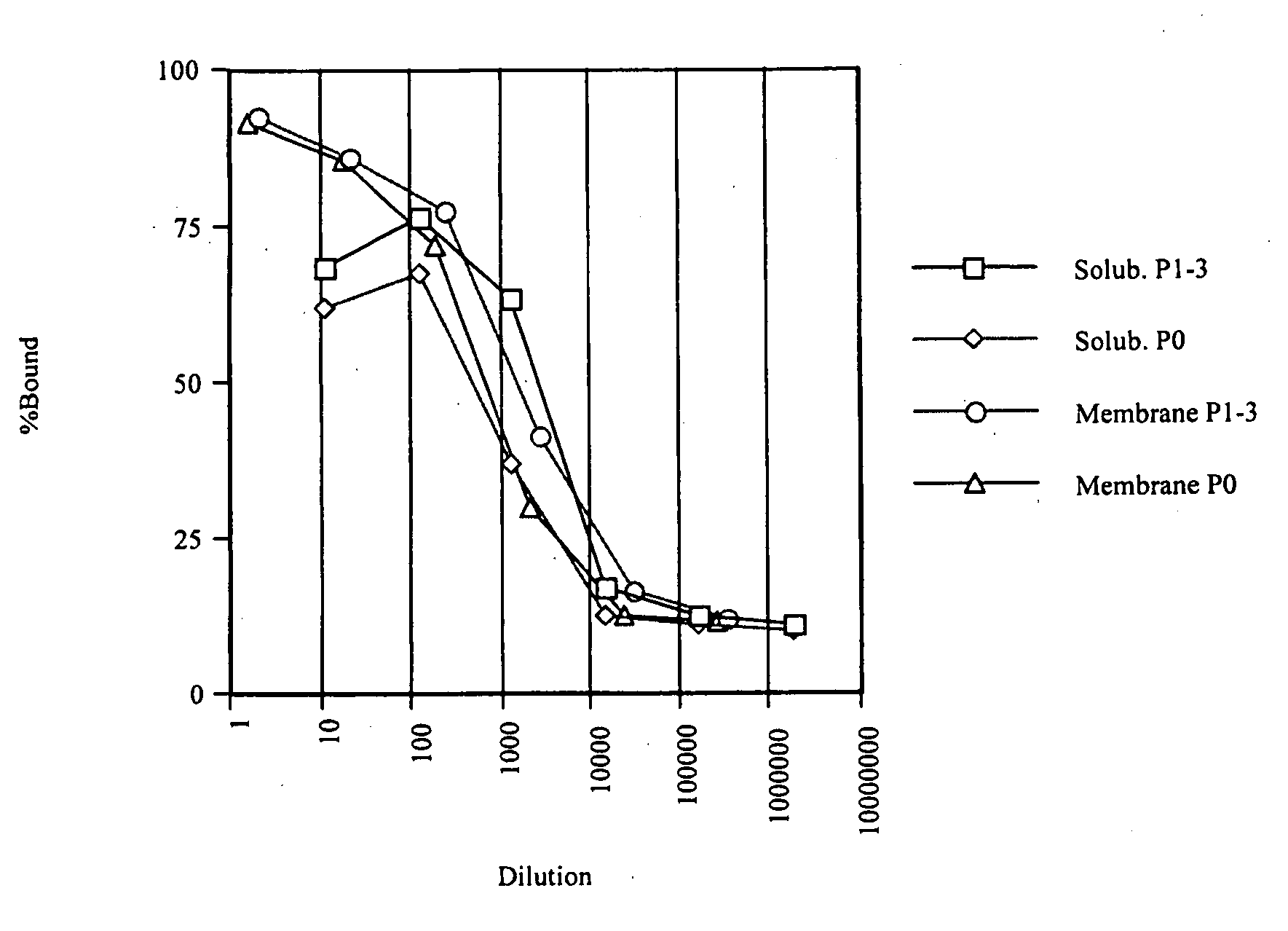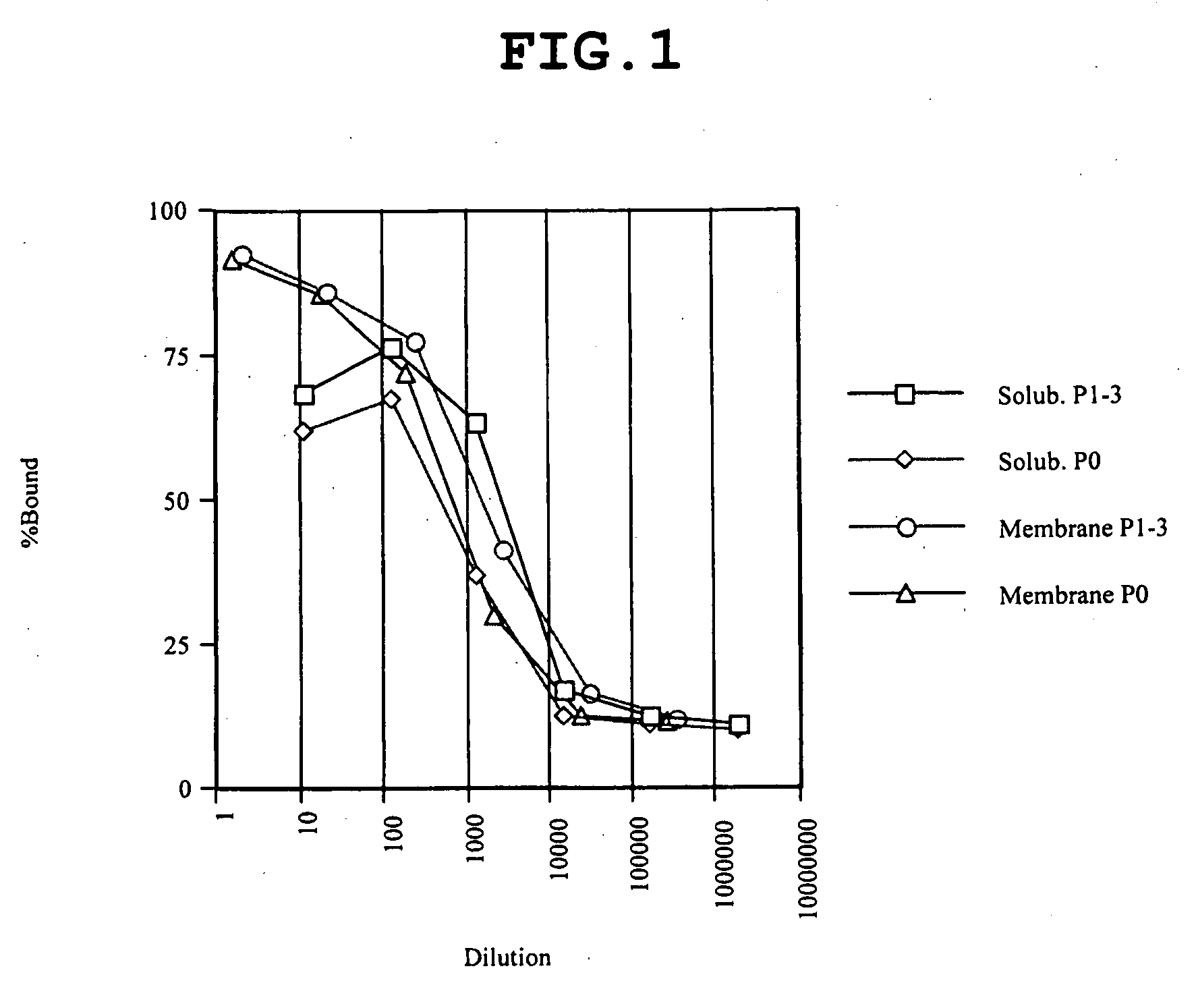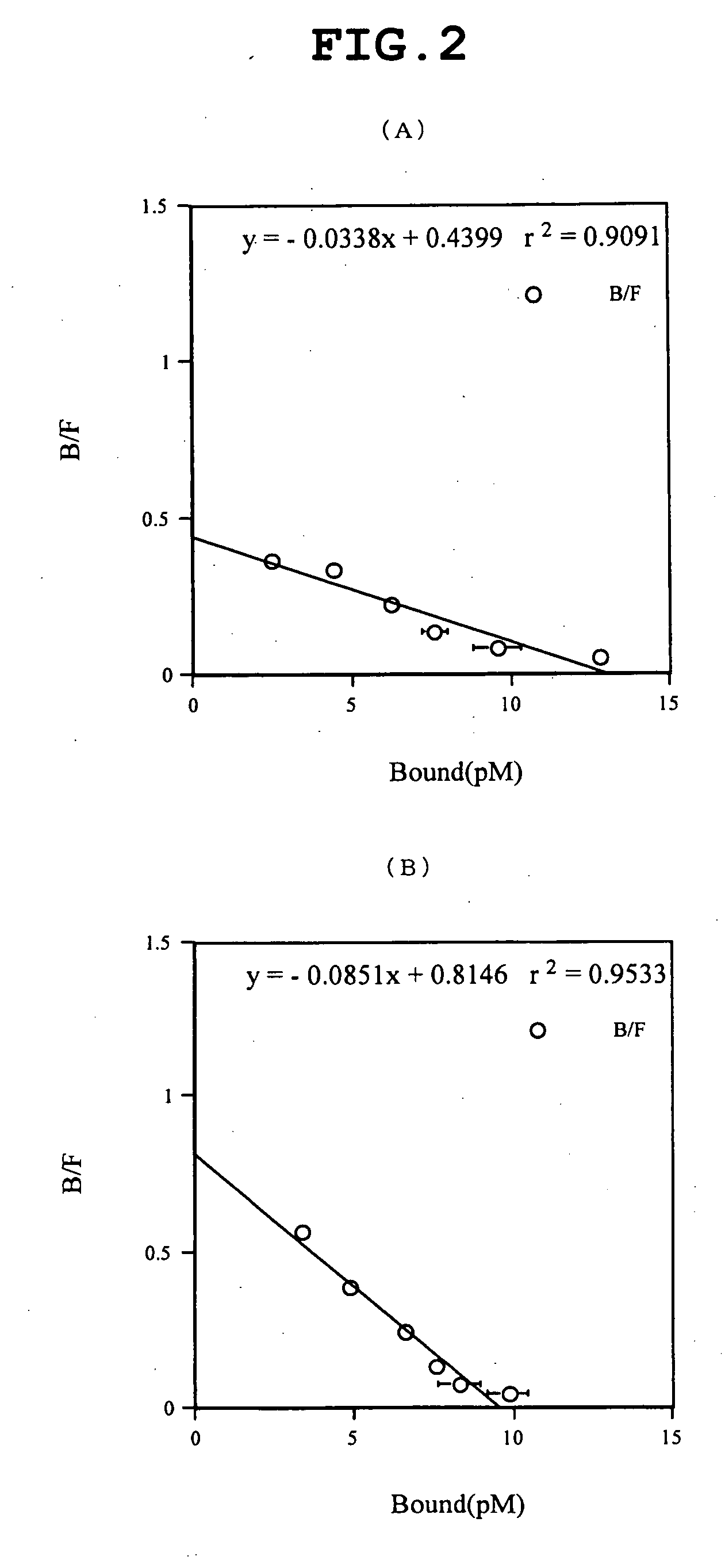Novel monoclonal antibody and use of the same
a monoclonal antibody and monoclonal antibody technology, applied in the field of new monoclonal antibodies, can solve the problems of limited protein area that can contribute to crystal formation, difficult to obtain crystals of high quality, and no good crystals have been obtained so far that permit conformational analysis
- Summary
- Abstract
- Description
- Claims
- Application Information
AI Technical Summary
Benefits of technology
Problems solved by technology
Method used
Image
Examples
example 1
Purification of Human PAC1 Using SM1200 / CHS Mixed Micelle System
[0298]From the culture broth (14 L) of Sf9 cell expressing human PAC1, a membrane fraction was prepared by a Polytron homogenizer as usual. After dilution to a protein concentration of 2 mg / mL, the membrane fraction was solubilized by gentle rotation at 4° C. in a solubilizing liquid containing 1.5% sucrose monolaulate (SM1200, Dojindo, S023) and 0.3% cholesteryl hemisuccinate Tris salt (CHS, Sigma, C6013). The apparent affinity of PAC1 before and after solubilization is shown in FIG. 1; Scatchard analyses of the membrane fraction and after solubilization are shown in FIG. 2. Because FIG. 1 plots the data with dilution rate indicated on the axis of abscissas relative to the 2 mg / mL membrane fraction used for the solubilization, the total affinity of receptor before and after solubilization of a given amount of the membrane fraction (proportional to the product of the number of receptors and equilibration constant (Kd)) ...
example 2
Preparation of Mouse Anti-Human PAC1 Monoclonal Antibody
[0303]With the PAC1 receptor purified in Example 1 above (hereinafter referred to as “SM1200 / CHS solubilized PAC1 receptor”) as an antigen, an emulsion prepared by mixing in a 1:1 ratio by volume the antigen and Freund's complete adjuvant for the first immunization, or Freund's incomplete adjuvant for the second and subsequent immunizations, was subcutaneously administered to BALB / C mice (6-week old, female) in an amount of 10 μg four times at 1-week intervals. After preliminary blood drawing, mice showing an increased antibody titer were selected, and each was subjected to final immunization (intravenous administration) with 10 μg of the antigen; 4 days later, the spleen was removed. Splenocytes were disassembled, thereafter filtered through sterile gauze, and suspended in TIL Medial (manufactured by Immuno-Biological Laboratories Co., Ltd., Cat. No. 33612) containing 10% FCS, to yield a splenocyte suspension. The cell used fo...
example 3
Affinity of Purified Mouse Anti-Human PAC1 Monoclonal Antibody for Antigen
[0304]Antigen SM1200 / CHS-solubilized PAC1 receptor was dispensed to MAXISORP at 50 μL / well to make 2 to 5 μg / mL, and allowed to stand overnight, after which 300 μL of a blocking solution containing 25% Block Ace was placed to cause blocking. After the plate was washed with PBS three times, solutions of the antibody obtained in Example 2 and the Fab of each antibody prepared by a conventional method were allowed to act at room temperature for 1.5 hours at various concentrations, thereafter a horseradish peroxidase (HRPO)-labeled goat anti-mouse IgG antibody (American Qualer, A106PU) in 1000-fold dilution was allowed to act at room temperature for 1 hour, and the plate was washed with a PBS containing 0.05% Tween 20 three times. Subsequently, 50 μL of HRPO substrate (TMB Peroxidase Substrate 2-component Kit, 50-76-00, manufactured by KPL) was dispensed to cause color development, and 50 μL of 1 N sulfuric acid w...
PUM
| Property | Measurement | Unit |
|---|---|---|
| temperature | aaaaa | aaaaa |
| temperature | aaaaa | aaaaa |
| concentration | aaaaa | aaaaa |
Abstract
Description
Claims
Application Information
 Login to View More
Login to View More - R&D
- Intellectual Property
- Life Sciences
- Materials
- Tech Scout
- Unparalleled Data Quality
- Higher Quality Content
- 60% Fewer Hallucinations
Browse by: Latest US Patents, China's latest patents, Technical Efficacy Thesaurus, Application Domain, Technology Topic, Popular Technical Reports.
© 2025 PatSnap. All rights reserved.Legal|Privacy policy|Modern Slavery Act Transparency Statement|Sitemap|About US| Contact US: help@patsnap.com



